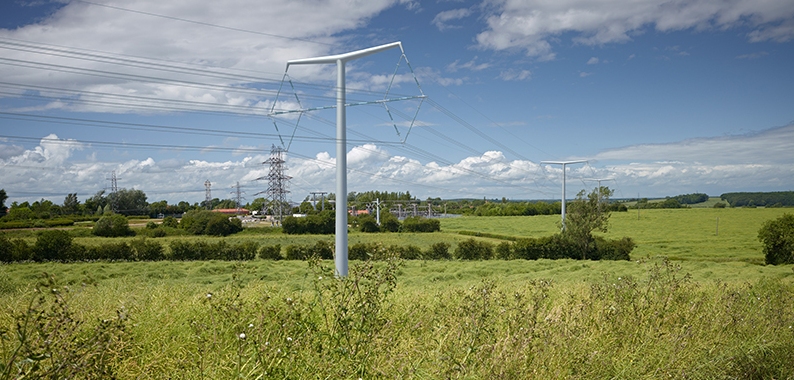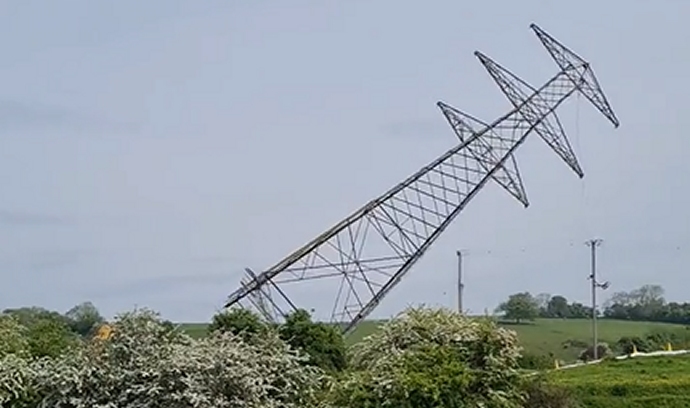Old electricity pylons are being pulled down in the Burnham-On-Sea area to make way for new T-pylons in the latest phase of the Hinkley Point project.
Scores of the 32 metre high structures are being taken down as part of National Grid’s project.
This video of the demolition of one of the pylons near to the King’s Sedgemoor Drain was shot by local resident Jackie Curtis this week.
Unlike the ‘lattice’ structures of usual pylons, T-pylons have a single pole and T-shaped cross arms to hold diamond insulators – like ‘earrings’ – and the wires, or conductors.
There will be a total of 116 T-pylons along the whole 35mile route, which run past East Huntspill and the village of Mark in the Burnham-On-Sea area and ends at Avonmouth.
The pylons are set to be powered up fore the first time this autumn. They will carry electricity from Hinkley Point C when it’s scheduled to start generating power in 2026.

In March, wires to carry low carbon energy onto the UK electricity network were installed on 36 of the Hinkley Connection Project’s new T-pylons in a process known as ‘stringing’, as Burnham-On-Sea.com reported here.
The Hinkley Connection stretches from Hinkley Point C to Seabank power substation. A section of the line runs underground between Loxton and Sandford, under the Mendip Hills.
A spokesman for the Hinkley Connection Project says the T-pylons are about a third shorter than the traditional lattice towers. Read more about the T-pylons here.







